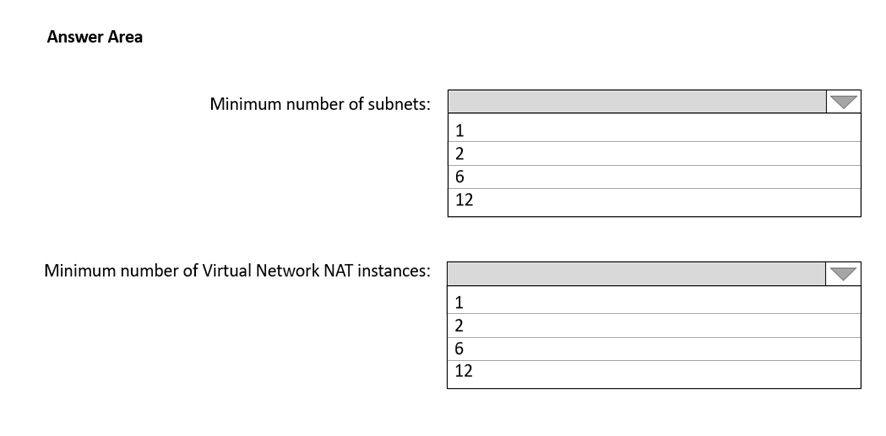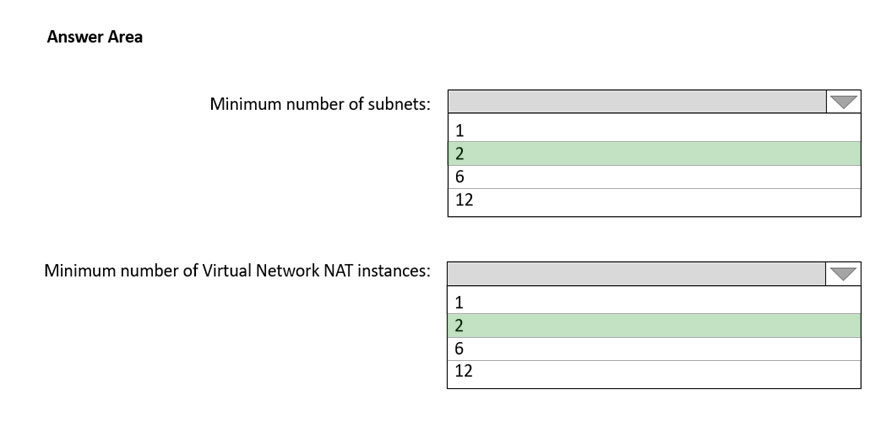HOTSPOT -
You have two Azure virtual networks named VNet1 and VNet2 in an Azure region that has three availability zones.
You deploy 12 virtual machines to each virtual network, deploying four virtual machines per zone. The virtual machines in VNet1 host an app named App1. The virtual machines in VNet2 host an app named App2.
You plan to use Azure Virtual Network NAT to implement outbound connectivity for App1 and App2.
You need to identify the minimum number of subnets and Virtual Network NAT instances required to meet the following requirements:
✑ A failure of two zones must NOT affect the availability of either App1 or App2.
✑ A failure of two zones must NOT affect the outbound connectivity of either App1 or App2.
What should you identify? To answer, select the appropriate options in the answer area.
NOTE: Each correct selection is worth one point.
Hot Area:

